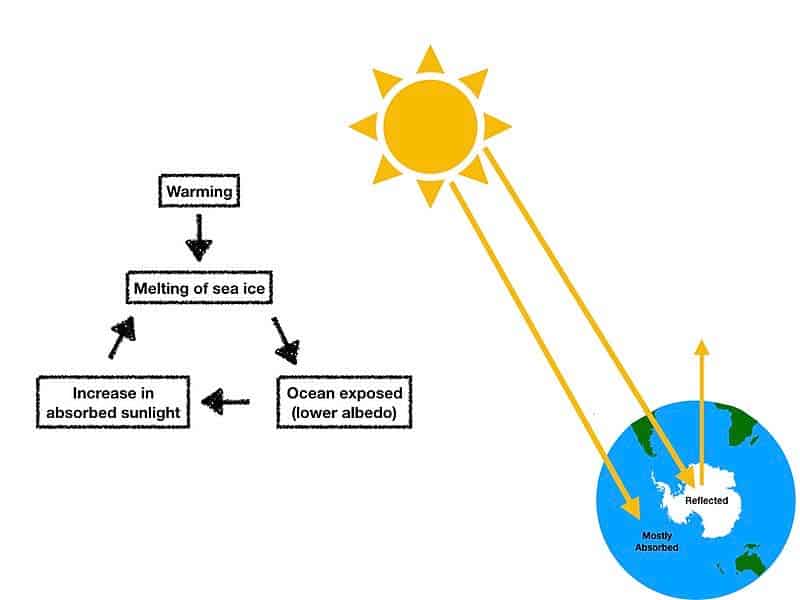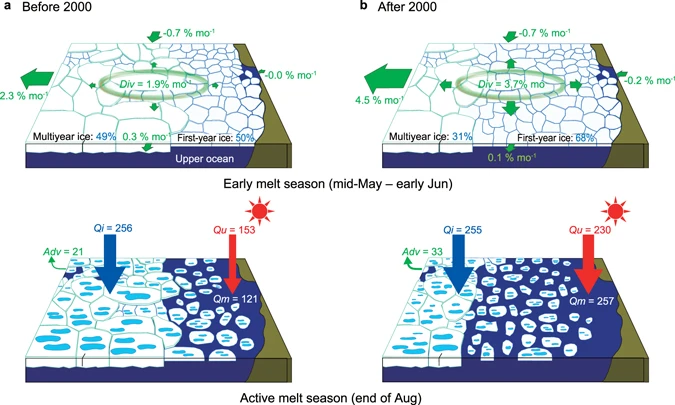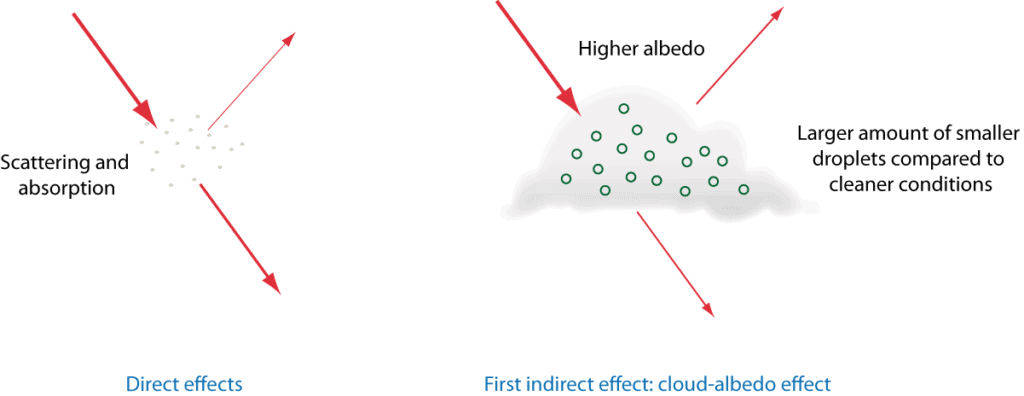When you get into the nitty-gritty of climate change, the word albedo often finds its way into the discussion — usually accompanied by words such as ‘reflectance’ or ‘ice’ — and there’s a good reason for that.
In essence, the albedo effect is very straightforward. Albedo is a measure of how a surface can reflect light, usually a concept that people relate to colors. Lighter colors reflect light more effectively than darker colors, which is why darker clothes get hot in the sun (but white clothes don’t).
The details, however, can get much more complex.

Albedo is commonly studied as a property in astronomy. Researchers look at different celestial bodies (planets, asteroids, comets) and infer certain things about their properties based on their albedo. But albedo is also important closer to Earth.
Albedo ranges from 0 (absorbs all radiation) to 1 (reflects all radiation). The higher the albedo, the more it reflects. This is sometimes represented in terms of percentages, from 0% to 100%.
The normal albedo of snow, for example, is nearly 1.0, whereas that of charcoal is about 0.04. A typical ocean albedo is approximately 0.06, while bare sea ice varies from approximately 0.5 to 0.7. In other words, when snow melts (and the underlying surface is exposed), more solar energy will be absorbed, capturing more heat.
It loops
The ice-albedo feedback is the relationship between the amount of solar radiation reflected and the climate response. The areas, which contribute the most to reflecting the sunlight, are closest to the poles. Two main places have the largest areas with a reflective surface, Greenland with almost 2.17 million km² and Antarctica with 1.2 million km².
Now imagine this scenario:
- Human activity produces greenhouse gases.
- This increases atmospheric temperatures, which leads to ice melting.
- Less ice means less reflective area.
- Less reflection means more absorbed energy.
- More absorbed energy means more heat.
- More heat means less ice. It’s a circular effect that builds on itself.
The opposite effect can happen as well: if the climate gets colder, ice can be sustained for a longer period, a bigger icy area means more radiation being reflected, the temperature continues dropping. This is called positive feedback — we go through a response that leads to another and another and another, and in the end it all came back to the original cause of the effects, exacerbating it.

Now that we know the general effect, let’s look at more subtle aspects.
Think about the ice that is floating. With the positive feedback effect kicking in, ice doesn’t even need to melt to affect the albedo — it just needs to break up. By dividing into smaller blocks, the ocean is exposed to the sun, and the ocean is darker. The seawater has a low albedo, it warms up faster and helps with the melting and the shredding of more ice.
Things can start off slowly, but accelerate quickly building on the feedback loop like a snowball effect. There’s also an inertia to the whole process, and it often builds up more inertia in time (meaning it’s harder to reverse the more time passes).
It’s not easy to understand the processes that govern albedo, however, due to the sheer complexity of the phenomenon and all the factors involved. Just look at a simplified (and very famous) diagram that pops up in meteorology lectures and gives students headaches.

It may seem complex, but we can break it down easily.
It’s basically a representation of the energy coming into the Earth and being emitted by the Earth. The left side of the diagram is the energy radiation coming from the sun. Out of this energy (342 W/m² that comes from the sun in this example), a part is reflected by clouds and atmospheric gases, a part is reflected by the surface, and the rest is absorbed.
Meanwhile, on the right, we see its counterpart — the radiation energy emitted by Earth. The more greenhouse gases in the atmosphere, the more of this energy is absorbed and the less is emitted.
This is the so-called energy budget of the planet. If it is in balance, the temperature remains constant. But if an imbalance is created (say, if we emit too many heat-trapping greenhouse gases), an imbalance is created and the temperatures start to change.
This is what we’re seeing now: human activities are creating imbalance by emitting greenhouse gases. In addition to the direct heating effect, this also creates a feedback loop with things like albedo.
Imbalances can happen naturally and have happened before in the Earth’s history, but this time, we’re pretty sure it’s us — all the evidence points to it.
Let’s talk about clouds

Clouds are important for the albedo as well, but it takes the right cloud to reflect a lot of energy.
If a cloud is fluffy and close to the surface, it has a strong reflectance and it will diminish radiation from entering, which results in cooling the area. A thin, high-altitude cloud won’t reflect radiation so well, but it traps radiation coming from Earth to the sky, in the end, it makes things warmer. The albedo of low thick clouds such as stratocumulus is about 90%. The albedo of high thin clouds such as cirrus may be as low as 10%.
On average, clouds contribute to reflecting solar energy, but the mechanisms aren’t always straightforward. More research is needed to thoroughly understand the effects that clouds have on planetary albedo.
There are no borders
Feedback mechanisms regarding albedo are irrefutable mechanisms in the climate system. The water-vapor feedback is undoubtedly a key process to the global warming. While we may not understand all the details and subtleties of this mechanism, we know it exists and we know it’s affectin the planet’s temperatures.
With more carbon dioxide(CO2) in the atmosphere, temperature rises, this increase can maintain water in the vapor form. This rise in the water concentration increases the air temperature because water vapor is also a greenhouse gas. This also melts ice and snow, revealing darker surfaces that absorb more heat.
It’s crucial to understand that that this isn’t a nationaal or local phenomenon. The atmosphere is a continuous medium, a fluid with different gases. The atmosphere knows no human borders. Our climate system is not made of separated feedbacks, they interact with each other and that is what causes a global climate crisis.
As CO2 levels are now at 414 ppm*, a level that is unprecedented in the past 600,000 years, and possibly in the past 20 million years. Without rapid and decisive action to reduce our emissions, we are headed towards levels that will cause irreversible, catastrophic changes to the planet’s climate. This will affect everyone on the globe without exception. The laws of physics will not feel sorry for us.
*This article is not updated regularly to reflect changes in the Earth’s CO2 concentration. You can check out this NASA page for regular updates.


